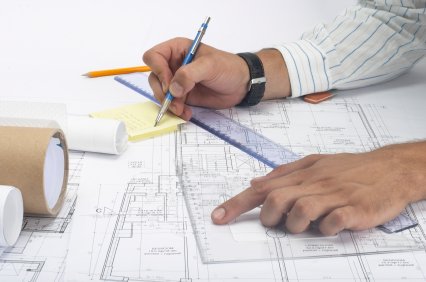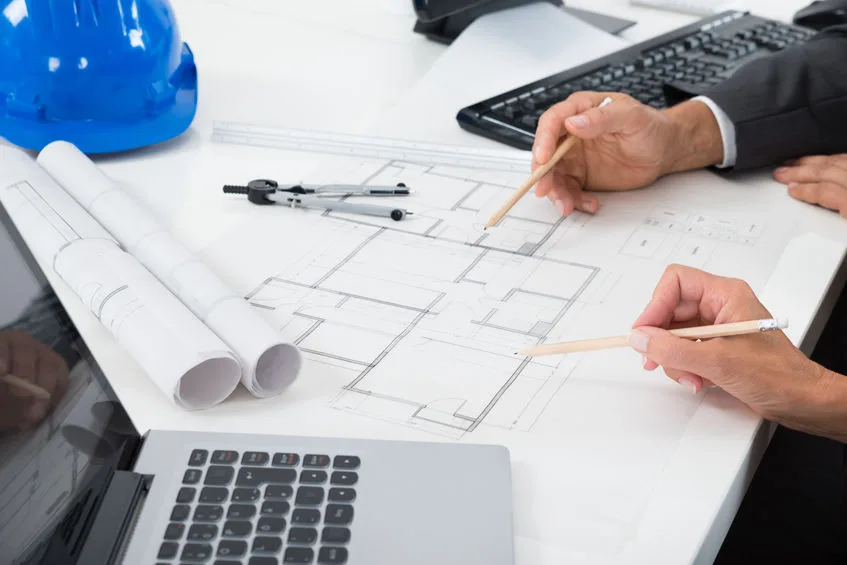Understanding the Diverse Career Paths Available for Aspiring Architect
As an ambitious Architect, you have a world of job paths waiting for you. Whether you're attracted to conventional design or the nuances of lasting design, there's a particular niche that lines up with your rate of interests.
Standard Design: Designing Buildings and Frameworks
Standard architecture concentrates on designing buildings and frameworks that blend performance with visual allure. As you explore this area, you'll value the detailed equilibrium in between form and objective. You'll find out to draw inspiration from historical designs, incorporating components like balance, materials, and workmanship. Your designs can mirror social heritage, showcasing local customs while meeting modern needs.
You'll develop skills in drafting, model-making, and site evaluation, allowing you to visualize and connect your ideas successfully. Engaging with clients, you'll need to recognize their vision and convert it into possible styles.
Furthermore, building codes and sustainability methods are necessary in your job, ensuring your structures are eco friendly and secure. As you expand in your career, you'll locate opportunities in residential, commercial, and even reconstruction jobs, each offering special obstacles. Accepting conventional architecture leads the way for a satisfying career that pays homage to the past while forming the future.
Urban Preparation: Forming Neighborhoods and Public Spaces
As a hopeful Architect, you can play a vital role as an urban organizer, transforming just how areas operate and engage. By utilizing neighborhood engagement methods, you'll ensure that residents have a voice fit their environment. Plus, incorporating sustainable design concepts will certainly aid produce spaces that not just meet today's needs however likewise protect the future.
Role of Urban Planners
While lots of might think about architects as the single dreamers behind structures, city coordinators play an important duty in shaping the more comprehensive landscape of areas and public spaces. They examine land use, zoning legislations, and area requires to develop lasting settings that boost top quality of life. By collaborating with various stakeholders, you'll help make parks, transport systems, and houses that advertise social interaction and accessibility. Urban planners likewise concentrate on ecological considerations, ensuring that advancements integrate environment-friendly areas and assistance biodiversity. Your expertise in spatial design and community characteristics permits you to picture future growth while maintaining social heritage. In this critical function, you'll directly affect how individuals experience their surroundings, making every task a chance for favorable change.
Community Interaction Methods
Reliable community interaction methods are essential for urban planners to ensure that the voices of residents are listened to and valued in the planning process. To promote meaningful dialogue, you must prioritize open online forums and workshops where community participants can express their ideas and concerns. By proactively paying attention and integrating feedback, you'll develop areas that reflect the community's demands, inevitably leading to more lasting and successful metropolitan atmospheres.
Sustainable Design Concepts
When designing metropolitan spaces, including lasting layout concepts is important for developing settings that prosper both ecologically and socially. You must start by focusing on power efficiency, using materials that minimize waste and advertise recycling. Consider integrating green spaces, like gardens and parks, to enhance biodiversity and boost air high quality. Advertising walkability and public transport can reduce dependence on automobiles, cultivating a much healthier area.
Creating with water preservation in mind is likewise key-- assume concerning rainfall yards and absorptive surface areas to manage stormwater. Including community participants throughout the preparation process guarantees that the rooms you develop meet their requirements and urge social communication. By accepting these concepts, you'll add to vivid, sustainable urban landscapes that benefit everybody.

Landscape Design: Creating Sustainable Exterior Atmospheres
As you check out landscape architecture, you'll uncover crucial style concepts that create gorgeous and functional outside areas. Sustainable practices play a crucial function in making certain these atmospheres grow while minimizing ecological effect. And also, you'll locate a variety of occupation chances that enable you to make an actual difference in how individuals connect with nature.
Design Concepts in Landscape
Recognizing style concepts in landscape architecture is essential for producing lasting outside atmospheres that integrate with nature. You'll require to contemplate components like range, proportion, and balance to guarantee your styles feel cohesive and welcoming. Integrating indigenous plants not just enhances biodiversity however additionally reduces water use, making your landscape resistant. Assume regarding the flow of room and exactly how individuals communicate with it; pathways and seating locations need to invite expedition and relaxation. Furthermore, pay interest to seasonal modifications, developing with products that match the surroundings year-round (Architect). By prioritizing sustainability and aesthetics, you can produce outside rooms that enhance the area and advertise well-being. Welcoming these concepts will set a strong structure for your profession in landscape design.
Sustainable Practices Review
Sustainable methods in landscape design not just concentrate on visual appeals however additionally focus on environmental health and source preservation. You can develop spaces that advertise dirt wellness, such as making use of organic materials and practicing permaculture principles. Eventually, these practices guarantee your styles benefit both people and the atmosphere for years to come.
Occupation Opportunities Expedition
With a strong foundation in sustainable practices, landscape architecture uses a variety of career courses that enable you to make a purposeful influence on the setting. Urban coordinators often work together with landscape engineers to create green spaces in city settings, enhancing city livability. If you're passionate about education and learning, think about coming to be a landscape design educator, inspiring future generations.
Lasting Layout: Focusing on Eco-Friendly Practices
As you discover your occupation in design, accepting eco-friendly methods can set you apart in a competitive area. Sustainable layout concentrates on developing structures that reduce ecological effect while boosting owner health. By incorporating sustainable products, energy-efficient systems, and lasting structure methods, you'll add to a greener future.
Beginning by getting knowledge of environment-friendly accreditations like LEED or BREEAM, which can reinforce your credentials. Take into consideration exactly how all-natural light, ventilation, and thermal effectiveness can maximize design. Work together with engineers and environmental specialists to innovate services that decrease waste and save sources.
Don't fail to remember the importance of community participation-- appealing regional stakeholders can influence designs that harmonize with the environment. As clients progressively focus on sustainability, your knowledge in environment-friendly techniques will certainly not only attract projects yet also meet your enthusiasm for responsible design. Welcome this crucial aspect of the profession, and watch your career thrive.
Historic Preservation: Protecting and Restoring Cultural Heritage
While you commence on your architectural journey, think about the essential function of historic conservation in keeping our cultural heritage. This field concentrates click here to read on the defense and repair of significant structures, websites, and structures that tell the stories of our past. By engaging in historical preservation, you'll help guard the architectural heritage that shapes neighborhood identity.
As a historical preservation Architect, you'll evaluate historical significance and assess the problem of frameworks. You'll function very closely with historians and conservationists to ensure authentic repair methods are used. This job course enables you to blend creativity with research, allowing you to develop remedies that value initial products and craftsmanship.
Your work not only adds to sustainability by recycling existing structures yet likewise fosters a feeling of pride within communities. Welcoming this course will certainly assist you become a guardian of history, maintaining the tales and appearances that enhance our lives.
Interior Design: Enhancing Indoor Spaces
Historic conservation and interior style both share a commitment to enhancing the built setting, yet they concentrate on different facets. While historical preservation emphasizes maintaining a structure's historical and cultural value, indoor architecture zeroes in on maximizing interior spaces for functionality and aesthetic appeals.
As a hopeful Architect, you'll discover that indoor design enables you to mix creativity with technical skills. You'll create spaces that not just look great yet likewise advertise convenience and performance. This field includes understanding how light, color, and products engage within a space, impacting mood and usability.
You'll deal with different projects, from residential homes to industrial offices, making sure that each setting fulfills the needs of its passengers. By focusing on user experience, you can transform insides into motivating and useful areas, making a considerable impact on how people communicate with their environments. Accept the possibility to boost indoor environments and shape the means people live and function.
Industrial Layout: Merging Capability With Aesthetic Appeals
Industrial style plays an essential role in producing products that flawlessly mix aesthetic appeals with functionality, making sure that what you utilize everyday is not just visually appealing however also functional. As an ambitious Architect, you might engage on your own in this field, concentrating on making every little thing from furniture to consumer electronic devices. read the article Your work entails recognizing individual needs, products, and producing procedures, permitting you to create ingenious options that enhance day-to-day experiences.
In commercial style, you'll often team up with marketing experts, makers, and designers, making certain that your designs are not only lovely but additionally feasible. You'll find out to stabilize form and feature, prioritizing usability without giving up design. By developing your abilities in laying out, 3D modeling, and prototyping, you'll be fully equipped to bring your ideas to life. This profession course offers a vibrant setting where creative thinking meets functionality, making it a gratifying choice for designers interested in shaping the products of tomorrow.
Regularly Asked Inquiries
What Educational Accreditations Do I Required to Come To Be an Architect?
To become an engineer, you'll need a professional degree in architecture, usually a Bachelor's or Master's. In addition, you'll have to finish an internship and pass the Architect Enrollment Evaluation to exercise legally.
Are There Accreditation Requirements for Various Architectural Profession Paths?
Yes, there're accreditation requirements for various building courses. Architect. You'll need to pass examinations, complete internships, and in some cases go after specialized training, depending on your picked emphasis, like landscape style, city layout, or historic preservation
What Software Program Abilities Are Vital for Engineers Today?

Just How Can I Gain Practical Experience While Studying Architecture?
You can gain functional experience by interning at architectural companies, taking part in design competitors, offering for community jobs, or teaming up with schoolmates on real-world assignments. These opportunities boost your skills and develop useful connections in the industry.
What Task Opportunities Exist Outside Standard Style Firms?
You can check out numerous job possibilities outside traditional design firms, like urban preparation, interior decoration, landscape style, building and construction administration, realty advancement, or perhaps duties in sustainability consulting. Each deals unique obstacles and rewards.
Whether you're attracted to standard architecture or the subtleties of read review lasting style, there's a specific niche that lines up with your interests.When creating urban rooms, including sustainable design principles is crucial for producing environments that prosper both environmentally and socially.As you check out landscape style, you'll uncover essential design concepts that produce practical and attractive exterior rooms.Recognizing layout concepts in landscape architecture is vital for developing lasting outside atmospheres that harmonize with nature.In industrial design, you'll commonly collaborate with marketing professionals, designers, and producers, making certain that your designs are not only gorgeous however additionally practical.